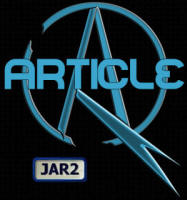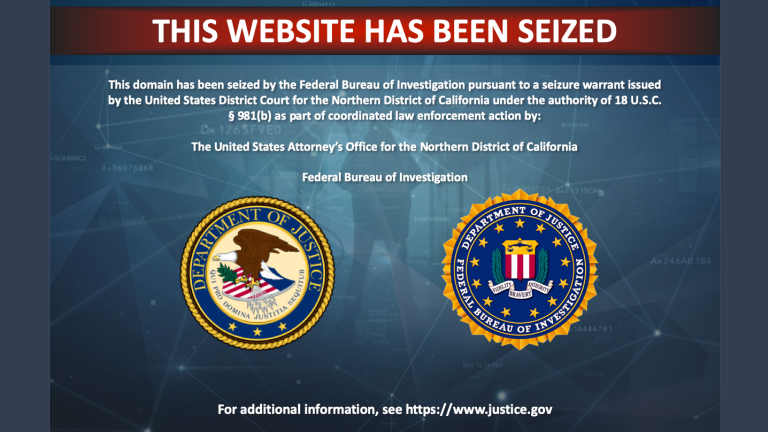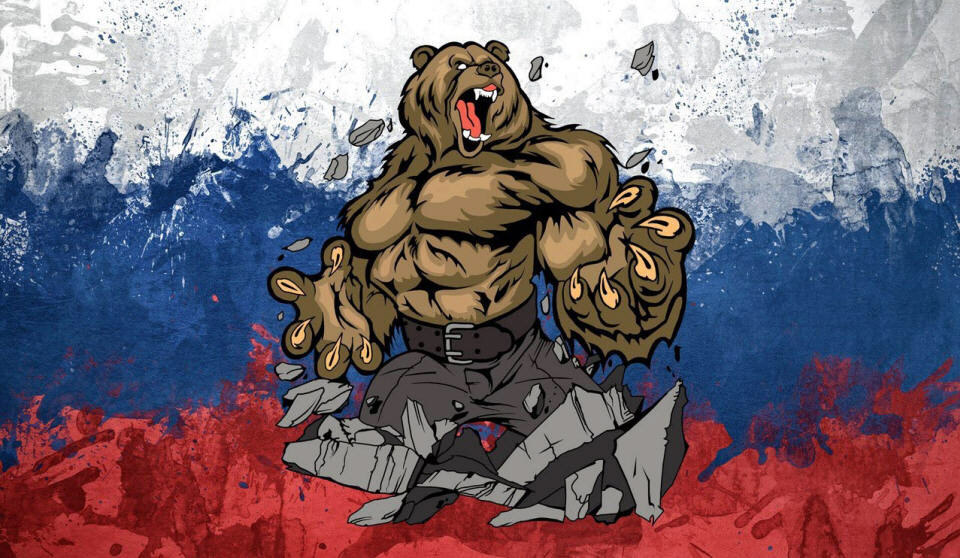Dominion, World Takeover, US Elections and the Crown Corporation:
The USA continues Blocking the Truth About NATO and the Ukraine
![]()
![]()
![]()
![]() The Endless Lies and Endless Crimes Have Got to End
The Endless Lies and Endless Crimes Have Got to End
November 16, 2020
 |
The Globalist Liars: A New World Power that is FakeBook, WhatsApp, Microsoft Dear Citizens of the World, We have once again lived through yet another mockery of democracy called a US Presidential Election which we are forced to watch and digest every four years knowing that they mean absolutely nothing and are just a show for the ignorant and the uniformed who somehow believe the selection of a face for the Corporation of the United States of America somehow has meaning and is important for all of us. It does not. The endless wars on humanity, the non-stop global meddling, the endless theft through sanctions and the relentless insane drive by the smallest minority imaginable to own and control the planet will continue unabated and unchanged. That is the good news. The bad news is that they want to kill 7 or 8 billion of us, doesn't really matter to them exactly how many, as they do not see us as human. They come in outright lying and acting indignanat and as if there is something wrong with us when we question. What people do not understand is that the FBI and the CIA are not "law enforcement" agencies, they are Security Services.
Videos/Crimea/He_Tried_to_Sell_Crimea_to_the_USA.mp4
|
|
Almost everything in the article below was published earlier by myself at the Voice of Russia World Service or here on JAR2. We have rebublished the article below to show how desperate and corrupt the FBI and the CIA are and what lengths they will go to to hide their crimes against humanity. Site Seized by the FBI on November 07, 2020 NOVEMBER 03, 2019 BY ERIC ZUESSE How the War in Ukraine Started The Obama Regime’s Plan to Seize the Russian Naval Base in Crimea Clear and convincing evidence will be presented here that, under U.S. President Barack Obama, the U.S. Government had a detailed plan, which was already active in June 2013, to take over Russia’s main naval base, which is in Sevastopol in Crimea, and to turn it into a U.S. naval base. There can now be no question that the war in Ukraine started, and resulted from, the U.S. Government’s plan to take over all of Ukraine, and especially to take over that Russian naval base, in Crimea, which then was in Ukraine. The war in Ukraine didn’t start at the time when a lot of people think that it did, with the overthrow of Ukraine’s President Viktor Yanukovych. It was already underway considerably before that time, because it started in Washington, as the following masterful 11-minute documentary makes clear — it started as a subterranean war by Washington to take over Ukraine, before it became an overt war (a “civil war”) within Ukraine: YOUTUBE VIDEO Videos/Crimea/The_Crimes_of_Euromaidan_Nazis_The_Pogrom_of_Korsun_on_20_02_2014.mp4 Videos/Crimea/Ukraine_Crisis_What_You're_Not_Being_Told.mp4 The CIA-edited and written Wikipedia claims that the war commenced in “a series of military actions that started in February 2014”; and, that, from the outset, it has been a “Russian military intervention in Ukraine (2014–present)” — not any sort of American intervention in Ukraine. However, to the extent that Russia has been involved in the Ukrainian war, that involvement came later, and was a reaction against what the U.S. Government and its agents had done to Ukraine (which nation is, of course, on Russia’s doorstep, and so Russia inevitably did respond). Therefore, the propagandistic function of Wikipedia must be acknowledged, even though Wikipedia is adequate for providing an introductory overview of some non-geostrategic subjects. The U.S. regime, under Barack Obama, had been planning, ever since June 2011, a takeover of Ukraine, in order to become enabled ultimately to place its nuclear missiles within less than five minutes flying-time to a first-strike blitz destruction of the Kremlin (thus preventing any effective Russian counter-attack). However, things didn’t work out quite according to the plan for the takeover of Ukraine, and here is how the war in Ukraine actually began: We’ll open by describing the planning for the conquest of Russia’s key naval base, in Sevastopol in Crimea. Crimea was inside Ukraine during 1954-2014, but had otherwise been inside Russia, going all the way back to 1783. (During 1954, the Soviet dictator, Khrushchev, arbitrarily transferred Crimea, from Russia to Ukraine, even though the vast majority of Crimeans considered themselves to be Russians, and their native language was Russian — but, after all, the Soviet Union was a dictatorship. Crimeans had no say in the matter.) The U.S. regime prepared for its planned takeover of Crimea by commissioning Gallup to poll Crimeans in 2013 to find out whether the residents there considered themselves to be Ukrainians (which would make the U.S. regime’s job in Crimea easier), or instead still Russians (which would foretell resistance there); and the findings were that Crimeans overwhelmingly still considered themselves to be Russians, definitely not Ukrainians. Nonetheless, the plan for the takeover went forward — the U.S. team, it is clear, decided that the residents of Crimea could be dealt with, in such ways as is shown here: YOUTUBE VIDEO Videos/Crimea/The_Crimes_of_Euromaidan_Nazis_The_Pogrom_of_Korsun_on_20_02_2014.mp4 Videos/Crimea/Ukraine_Crisis_What_You're_Not_Being_Told.mp4
Some were clubbed to death, others became permanently
disabled from their injuries, but this was a warning to
Crimeans, to buckle under, and give up: be ruled from
Kiev, by Washington’s regime. It didn’t work. A
referendum was quickly held in Crimea about whether they
wanted to be ruled by the newly installed Ukrainian
government, and the results were in line with Gallup’s
findings: Crimeans wanted to be ruled from Moscow, not
from Kiev.
When Gallup did their “Public Opinion Survey Residents
of the Autonomous Republic of Crimea May 16-30, 2013”
(which was called that because even when Crimea was part
of Ukraine, it had a special status, as being an
“Autonomous Republic” — not a province), only 15% (slide
8) of Crimeans viewed themselves as “Ukrainian,” but 40%
said “Russian,” and 24% said “Crimean.” 53% (slide 14)
wanted Crimeans to be part of the “Customs Union with
Russia, Belarus and Kazakhstan,” but only 17% wanted
Crimeans to be part of “The European Union.” 68% (slide
15) said their feelings toward “Russia” were “warm,” but
only 6% said their feelings toward “USA” were “warm. Federal Contract Opportunity for Renovation of Sevastopol School #5, Ukraine N33191-13-R-1240. The NAICS Category is 236220 - Commercial and Institutional Building Construction. Posted Aug 20, 2013. Posted by the Naval Facilities Engineering Command (DOD - Navy). The work will be performed at Sevastopol 99000.
A remarkably full description, of what that extraordinary RFP was about, was provided on 24 April 2014 by a “Lada Ray,” under the headline “Breaking! US Planned to Turn #Crimea into Military Base Against Russia”, and here is its opening: Breaking! US Planned to Turn #Crimea into Military Base Against Russia 24 April 2014, Lada Ray: A couple of weeks ago Crimea and Sevastopol almost unanimously voted to re-join Russia. The Crimeans said: we had been unappreciated guests, now we are returning home after a long voyage. More about that in my articles: Why is Crimea Overwhelmingly Pro RE-Unification With Russia? Prediction: Crimea Independence Vote The information coming to the surface now shows that if Crimea stayed as part of Ukraine, it would have become a huge NATO/US military base. I seriously doubt that the people of the Crimea would have stood for that, but if such a thing did happen, it would have meant WWIII as Russia would never allow it. From this perspective it’s especially clear why NATO, USA and EU were so shocked that Russia decisively accepted Crimea back. They already considered it theirs. The city of Sevastopol is the prized possession. This is one of the best harbors in the world. But the entire Crimea is of huge strategic importance – first and foremost, if you want to attack Russia. In addition, Crimea is important for the control over other countries, including Iran and Turkey. As they say, he who controls Crimea, controls the Black Sea. At least one hospital in Crimea’s capital Simferopol and at least one school in Sevastopol were targeted by the US/NATO just recently. They were planning on turning the hospital into a base for their troops after a massive renovation. One of the high schools (a gymnasium) in Sevastopol the Kiev authorities were about to sell to the US to be repurposed as a school for spies, targeting Russia. It was planned that the kids going to that school would be learning languages and spying techniques since an early age. It appears Americans wanted to turn the Crimea into a massive military/navy/intelligence complex. The famous, one-of-a-kind Soviet underground submarine base in Balaklava, which is now the Museum of the Cold War, was visited in the past several years by at least 25 delegations from the Pentagon, US Navy, NATO, and Western political circles. Kiev gave them access to super-secret Russian/Soviet sectors of the base, which were supposed to be off limits. They studied with great interest the secret documentation and technology. In Sevastopol, called “the city of the Russian glory” and the “hero city,” the NATO and US navy ships and military have been present for years. The population greeted them with constant protests, which prevented some of the planned joint military exercises between NATO and Kiev. Sometimes, the NATO ships had to leave because of the population’s resistance (protest footage on video below at 1:54). US/NATO ships in the Sevastopol harbor tried many times to “park” right in front of the Russian ships stationed there just out of spite. As we know, for 23 years, since the breakup of the USSR in 1991. Russia has been leasing its own base on its historic land for $100mln a year from Kiev. Sevastopol had been the important base of the Russian Fleet since 1776. Sevastopol is a large and beautiful city populated with ethnic Russians, many of whom are retired navy officers and their families. These people dreamed for 23 years of going home – and by home they always meant Russia. Add to that that Kiev constantly attacked Russian language, little by little taking away the right of the Russian-speakers to speak their native language. In Crimea, the US financed very generously various media, NGOs, and politicians, who would essentially become their agents. Of course, much of that was styled as support for democracy.
People of the Crimea felt deeply insulted by such attitude by the bought-and-paid-for Kiev and such disrespect of their heritage and wishes by the US/NATO. You didn’t see that information in the New York Times, Washington Post, London Times, Telegraph, Guardian, or any other U.S.-regime propaganda-organ; and, so, the facts that are told there might be surprising (or even shocking) to readers under the U.S. regime; but they are true, and the propaganda isn’t. Then, Ukraine’s far eastern Donbass region, which had voted over 90% for the democratically elected President of Ukraine whom Obama had overthrown, also broke away. Here is how that happened: Ukraine started its war against resisters by drafting everyone they could grab, and sending them in tanks into the south and east, in order to prevent any more secessions than Crimea had already done. The draftees were terrified, and didn’t want to kill. On 16 April 2014, the Kiev Post bannered “A day of humiliation, as Ukrainian military offensive stalls, six armored vehicles seized”. It opened: “On April 15, Ukraine’s military began an anti-terrorist operation against Kremlin-backed insurgents who have taken over numerous government buildings and police headquarters in several cities of Donetsk Oblast, Ukraine’s most populous region where 10 percent of the nation’s 45 million people live.” The residents in Donbass were now officially (by the Obama-installed government) called “terrorists,” and Ukraine called its war to exterminate them the “Anti-Terrorist Operation” or ATO. Its objective was to eliminate as many of Yanukovych’s voters as possible (and Donbass having voted over 90% for Yanukovych meant that all of it was now a free-fire zone for Ukraine’s soldiers and bombers), so that the new regime would be able to win future elections (by eliminating the government’s opponents). On 2 May 2014, thugs who were organized by the newly installed American regime in Kiev burned to death an uncounted number, perhaps over a hundred, individuals inside the Odessa Trade Unions Building, who had been distributing flyers against the coup-regime. Some of the massacre’s key organizers had friends inside the Obama White House. That event set off a panic throughout the eastern and southern half of Ukraine, where Yanukovych had overwhelmingly won the Presidency. The secession movement in the areas where Yanukovych had won (southern and eastern Ukraine), formed, and during 4-9 May 2014 took over some government buildings. Donbass, where Yanukovych had won by over 90%, seceded. The bombings and cannonades against Donbass — and sometimes even firebombings against them— took over. That’s how the war started. The U.S. regime and its supporters imposed severe sanctions against Russia for responding. The accounts that have been given about the Ukrainian war by U.S.-and-allied ‘news’-media have been boldly blatant lies. |
 |
![]()
![]()
![]()
![]() For Information on John's Personal Struggle Please See His Blog
For Information on John's Personal Struggle Please See His Blog
![]()
![]()
![]() For other original work see the blog and the various sections of the site.
For other original work see the blog and the various sections of the site.
http://www.jar2.com/VOR/John_Robles_VOR.html
http://www.jar2.com/Default.htm
![]()
![]()
![]() For All Leaks See the Files Page the Raw Leaks Page and JAR2 biz
For All Leaks See the Files Page the Raw Leaks Page and JAR2 biz
http://www.jar2.com/INDEX.html
http://www.jar2.com/Topics/Raw_Leaks.html
![]()
![]()
![]()
![]() There are literally thousands of articles on JAR2 with the majority of them
being
There are literally thousands of articles on JAR2 with the majority of them
being
the original work of the site's owner John Robles II. We encourage you to look around and while some may seem dated all work is topical as almost all of the subjects and operations covered continue to this day and continue to affect the world that we all live in. - John
http://www.jar2.com/Articles/John_Robles_Entry_Page.html
http://www.jar2.com/1/Archive/Archive.htm
2019: Page With Short Summary of All Articles Written Chiefly for JAR2 and Other Outlets
http://www.jar2.com/Articles/John_Robles_2019.html
2018: Page With Short Summary of All Articles Written Chiefly for JAR2 and Other Outlets
http://www.jar2.com/Articles/John_Robles_2018.html
2017: Page With Short Summary of All Articles Written Chiefly for JAR2 and Other Outlets
http://www.jar2.com/Articles/John_Robles_2017.html
2016: Page With Short Summary of All Articles Written Chiefly for JAR2 and Other Outlets
http://www.jar2.com/Articles/John_Robles_2016.html
2015: Page With Short Summary of All Articles Written Chiefly for JAR2 and Other Outlets
http://www.jar2.com/Articles/John_Robles_2015.html

2014: Page With Short Summary of All Interviews and Articles Written Chiefly for the VOR
http://www.jar2.com/VOR/John_Robles_VOR.html
2014: Page With Full Text of All Articles Written in 2014
http://www.jar2.com/Articles/John_Robles_2014.html
2013: Page With Short Summary of All Interviews and Articles Written Chiefly for the VOR
http://www.jar2.com/VOR/John_Robles_VOR_2013.html
2013: Pages With Full Text of All Articles Written in 2013
http://www.jar2.com/Articles/John_Robles_2013_A.html
http://www.jar2.com/Articles/John_Robles_2013_B.html
2012: Page With Short Summary of All Interviews and Articles Written Chiefly for the VOR
http://www.jar2.com/VOR/John_Robles_VOR_2012.html
2011 and 2012: Page With Full Text of All Articles Written in 2011 and 2012
http://www.jar2.com/Articles/John_Robles_2011_2012.html
2010 and 2011: Page With Short Summary of All Interviews and Articles Written Chiefly for the VOR
http://www.jar2.com/VOR/John_Robles_VOR_2011_2010.html
1995 to 2009: Page With Summmary and Links to Most Important Work by JAR2
Copyright JAR2 2003-2103 All Rights Reserved Publishing Banned Truth Since June 06, 2003
|




































